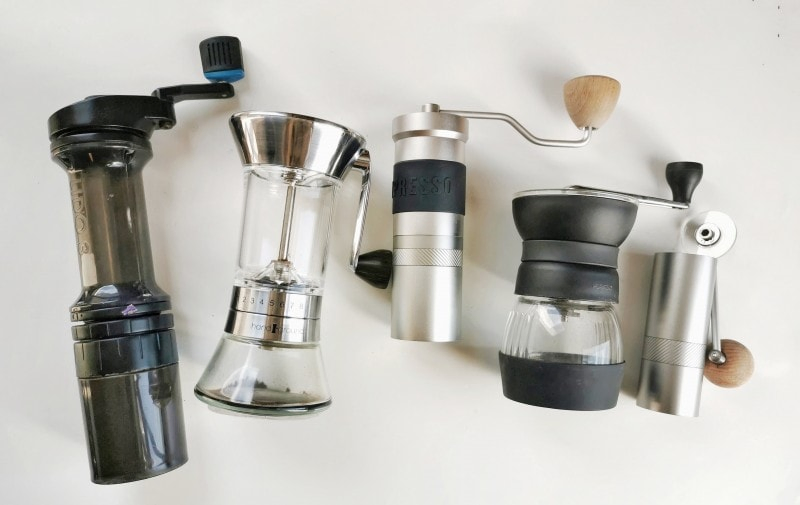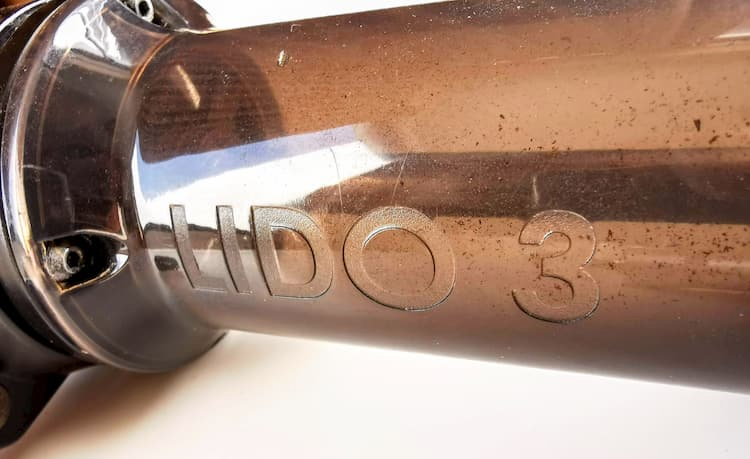It’s funny to think about it, but it’s not long ago that you just had a couple of choices when it came to manual grinders.
If you wanted to go cheap, you had the dinky options from Hario and Porlex, and if you wanted something substantial, there were the imposing Lido grinders from Orphan Espresso.
So it was only natural that the Lido 3 got a reputation as cream of the crop when it came to manual grinders.
But that was back then.
In 2021, the premium hand grinder market is a lot more competitive.
In this review, I’ll take a close look at the most popular grinder from Orphan Espresso and see if it still has what it takes compared to the new school of manual mills.
About Orphan Espresso
Orphan Espresso is an American family company run by Doug and Barb Garrott.
They produce a wide range of spare parts for espresso machines and various coffee accessories. Their grinders are the most renowned products in their line up.
They started with the gigantic, manual espresso grinder, the Pharos, before they moved on to the more compact (but still substantial) Lido series, where number 3 and the E(T)-model are the culmination of the design. Both these grinders feature big conical steel burrs custom-built by the famous Liechtenstein-based burr manufacturer Etzinger.

I was crazy enough to bring the Lido 3 on an airplane. As you can tell from the angle, it’s not ideal for confined spaces. And unfortunately I fly economy.
The company initially launched Lido 3 as a travel grinder, since it’s lighter than other models in the line-up. However, with a weight of 1 kilo/2,2 pounds, and bulky design, I’m not sure if that’s an earnest description or rather an attempt at humor.
OE launched a completely new travel grinder named the ‘Fixie’ in 2020, which is only one third the weight of the Lido 3, so something points to the latter.
Lido 3 Design and material
The Lido 3 is a striking coffee grinder. It’s hard to say whether it’s cool or too much. You could call it the monster truck of manual grinders without being rude.
From the neoprene carry pouch to the branding, there’s just something about it that’s hard to put your fingers on. It’s not trying to be pretty or minimalist, and yet you can tell that it’s the work of a lot of conscious design decisions.
Take the hopper stopper, for instance. I can’t think of any other everyday products I use daily with the same kind of heft. It feels like a statement.
Despite mostly being plastic, the overall build quality of the grinder is impressive at first glance. It’s far from the flimsy stuff being marketed as ‘premium’ nowadays.
Enormeous capacity

The hopper itself is enormous and has 70-gram capacity. That’s both one of the good and bad things about this grinder. If you need to grind this much, then you’re in for a treat.
All the extra capacity adds to the size of the grinder, and it doesn’t seem necessary.
However, most home baristas rarely make this much coffee in one go. If I had to guess, I think the most common dose for specialty coffee at home is between 14-30 grams. People who brew huge batches daily will probably want to invest in an electrical grinder soon.
All the extra capacity adds to the size of the grinder, and it doesn’t seem necessary.
Subpar grounds bin
Going down to the catch cup, there’s a more critical catch. After about a year of use, the plastic of the threading on my grinder started to get worn out, making it more difficult to use.

Eventually, the anti-static catch cup was unusable and falling off while grinding.
I have seen the problem reported on enough coffee forums to believe that it’s not just a couple of faulty units, but a widespread issue. Getting a new part will be expensive and cumbersome, especially if you don’t live in the US.
Please note, that the newest version on Orphan Espresso’s website ships with a new stainless steel grounds jar instead. It’s a nice upgrade, however, the golden color of the new cup is hopefully out of place aesthetically speaking. It seems like an emergency solution rather than a conscious choice.
Annoying adjustment
The Lido 3 has a somewhat controversial adjustment mechanism. It has a step-less dial instead of fixed settings that are common with manual grinders. The burr locking mechanism and the adjustment ring are located right next to each other.
This design makes it slightly awkward to fix the adjustment so it won’t slide later on. Finding back to old settings can also be a bit of a struggle.
The company suggests that you remember markings by placing small pieces of tape around the adjustment ring, but that’s not a very elegant solution when you see what rival manufacturers are doing.

Ergonomics (and lack of speed)
While the Lido 3 grinds at a reasonable speed, it’s a bit unwieldy. In hand it just feels like the proportions could have been made a lot better. The grinder is long and heavy. The hopper is not the slimmest. At the same time, the handle could be longer.
Compared to other premium grinders such as those from 1Zpresso, Helor and Comandante, it’s more awkward to operate.
The Lido 3 has bigger burrs than the Helor 101 and Comandante, but it’s not faster. That is due to the lack of ergonomics. Compared to a grinder such as the 1Zpresso Jx, it’s slow.
Grind quality
The Lido 3 produces a good, consistent grind at all settings from French press to pour over.
Some people claim that Lido 3 is suitable for espresso, but I have always been getting burr rub when attempting to grind espresso-fine. Also, it’s already challenging enough to change the grind size and ensure a proper lock, so I think that dialing in an espresso shot would quickly become frustrating.

Even though the grinder is more consistent than many entry-level electric burr grinders, it’s not as uniform in its output as some of the other premium grinders in my collection.
It’s complicated to reassemble the grinder after cleaning, and it could potentially cause improper alignment.
I have previously compared it to Helor 101 and Wilfa Uniform in cupping, where it fell short.
This might be due to bad alignment. It’s complicated to reassemble the grinder after cleaning, and it could potentially cause improper alignment. There is a bigger room for errors compared to many of the rivals I’ll talk about in the next section.
Alternatives?
There are plenty of popular premium hand grinders available today.
There’s a broad consensus that 1Zpresso Jx, Comandante, Kinu M47, and Helor 101 deliver extraordinary consistency that you’d only get from semi-pro electric grinders.
While they each have their pros and cons, their basic shape and form are somewhat similar.

You have a body of machined steel or aluminum with a center axle fixed on ball bearings both at the top of the bottom. At the top, you have a long handle that gives you leverage when cranking the unit.
This design is also used on some of the mid-range options, such as the models from Timemore.
At this point, it’s safe to say that most specialty coffee consumers, who are looking for a single-dose manual grinder, capable of both filter and espresso, would be happier with this kind of design.
Conclusion: Lido 3 review
The Lido 3 was probably the best manual grinder when it was launched back in 2015, but today there are better and cheaper options available.
On paper, the Lido 3 seems like a sturdy and well-made grinder, but it’s not a frictionless experience in daily use. Except being made by an American company and having an unusually large capacity for a hand crank grinder, it doesn’t stand out compared to the newer rivals from Asia and Germany, respectively.
It has some rather distinctive flaws that you don’t get with other models at the price range.
However, the company and the people behind Orphan Espresso are sympathetic, and it’s difficult not to admire them for their ingenuity and passion for coffee and innovation.
The Lido 3 was probably the best manual grinder when it was launched back in 2015, but today there are better and cheaper options available.
It’s difficult to recommend this model unless you have particular desires, like supporting an American company or being able to grind more than 40 grams of beans in one go.
